Subversive stitching: ’Art_Textiles’ at The Whitworth, Manchester
A new show at the Whitworth explores how textiles are used as an art medium to highlight social, political and artistic ideas.
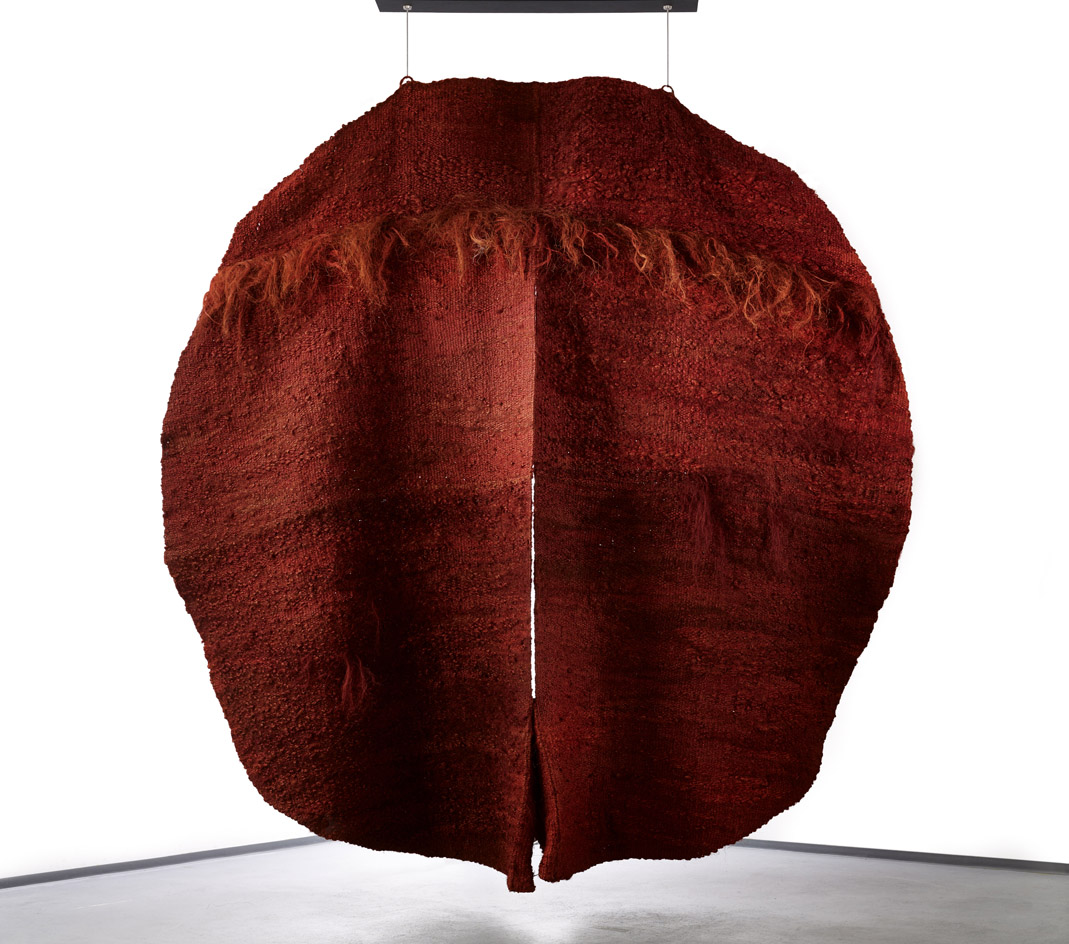
Fresh from its MUMA renovation, unveiled earlier this year, Manchester's Whitworth Gallery is currently playing host to an exhibition of textiles that make the crossover from the realm of craft into fine art. Featuring artists such as Magdalena Abakanowicz, Tracey Emin, Grayson Perry, Ghada Amer and Kimsooja, the new show specifically gathers textiles that have been made to express social, political or artistic ideas – a practice that, as the curators note, has been growing since the 1960s.
Awe-inspiring pieces like Faith Wilding's web-like Crocheted Environment, otherwise known as 'The Womb Room', represents the wave of feminist artists who reappropriated traditional domestic crafts to create subtly subversive artworks in the 1970s; while Anne Wilson's intricately-stitched, damaged damask cloth Dispersions (no. 27) and Ghada Amer's embroidered Sunset with Words – RFGA demonstrate how contemporary artists continue to be influenced by these early pioneers.
Other art works touch upon politics of identity and nationhood, as well as the value of the handmade in the digital age. For instance, Lawrence Lemaoana’s fabric and embroidery work I Did Not Join The Struggle To Be Poor, is a sign made of the African National Congress flag that reinterprets the much-quoted statement made by former head of communications for the ANC, Smuts Ngonyama, when he was accused of unfair business practices in 2007.
As well as established talents, the show also introduces new names such as Mary Sibande, whose work explores identity in post-apartheid South Africa and stereotypes around the black female body.
'Textiles are a powerful medium for the expression of political and social issues that are current right now. They raise questions about the value of the local and global, making them an ideal vehicle to critique global capitalism and homogeneity of production,' says curator Jennifer Harris. 'Their history and close association with women and domestic crafts exemplify the revival of interest in hand making and the tactile in a super-speed, digital age. And there is a new urgency to feminist issues around the world, making people look again at feminist work made in the 1970s and ‘80s.'
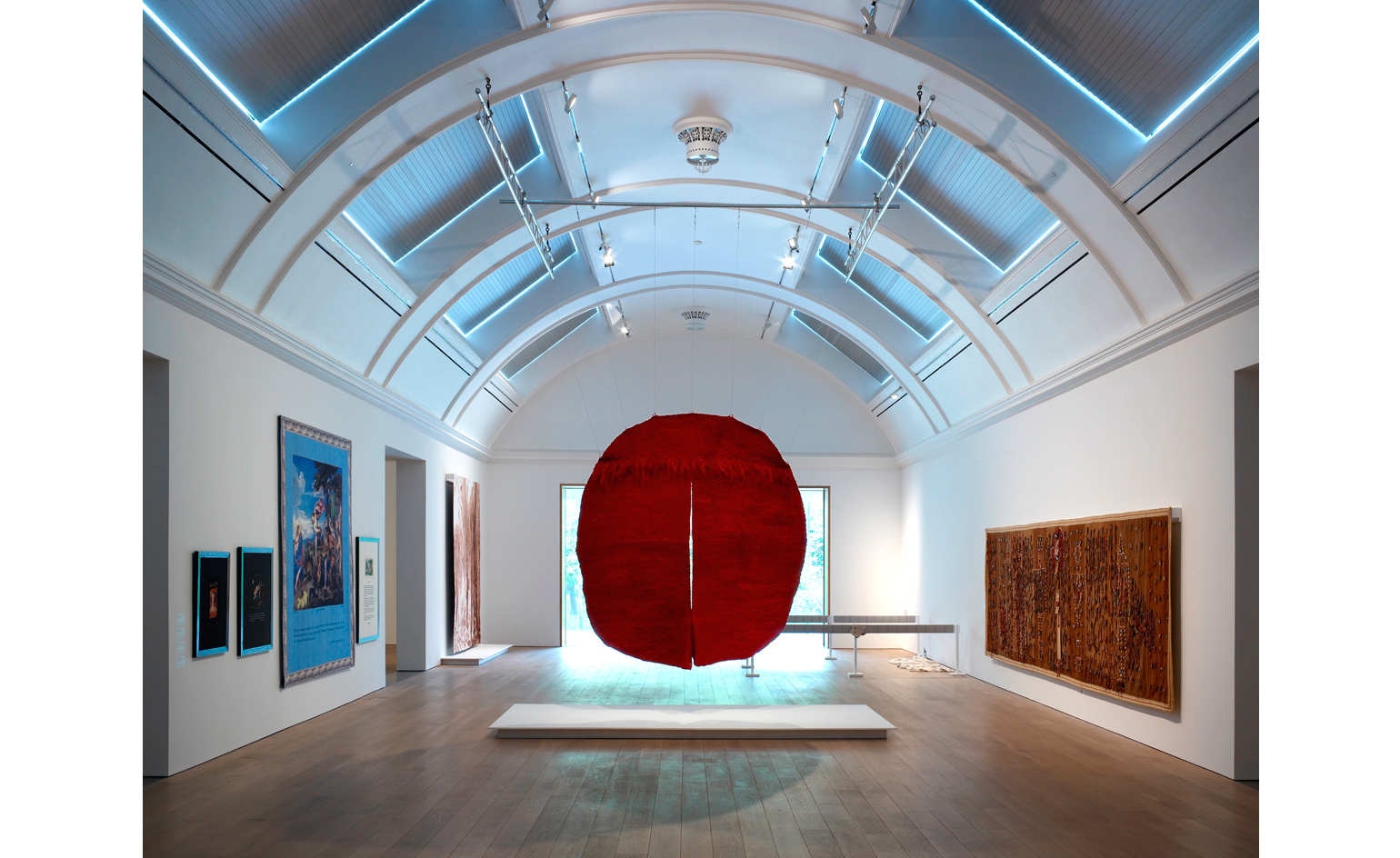
The show draws on the museum's 20,000-strong collection of dress and textile objects from across the world
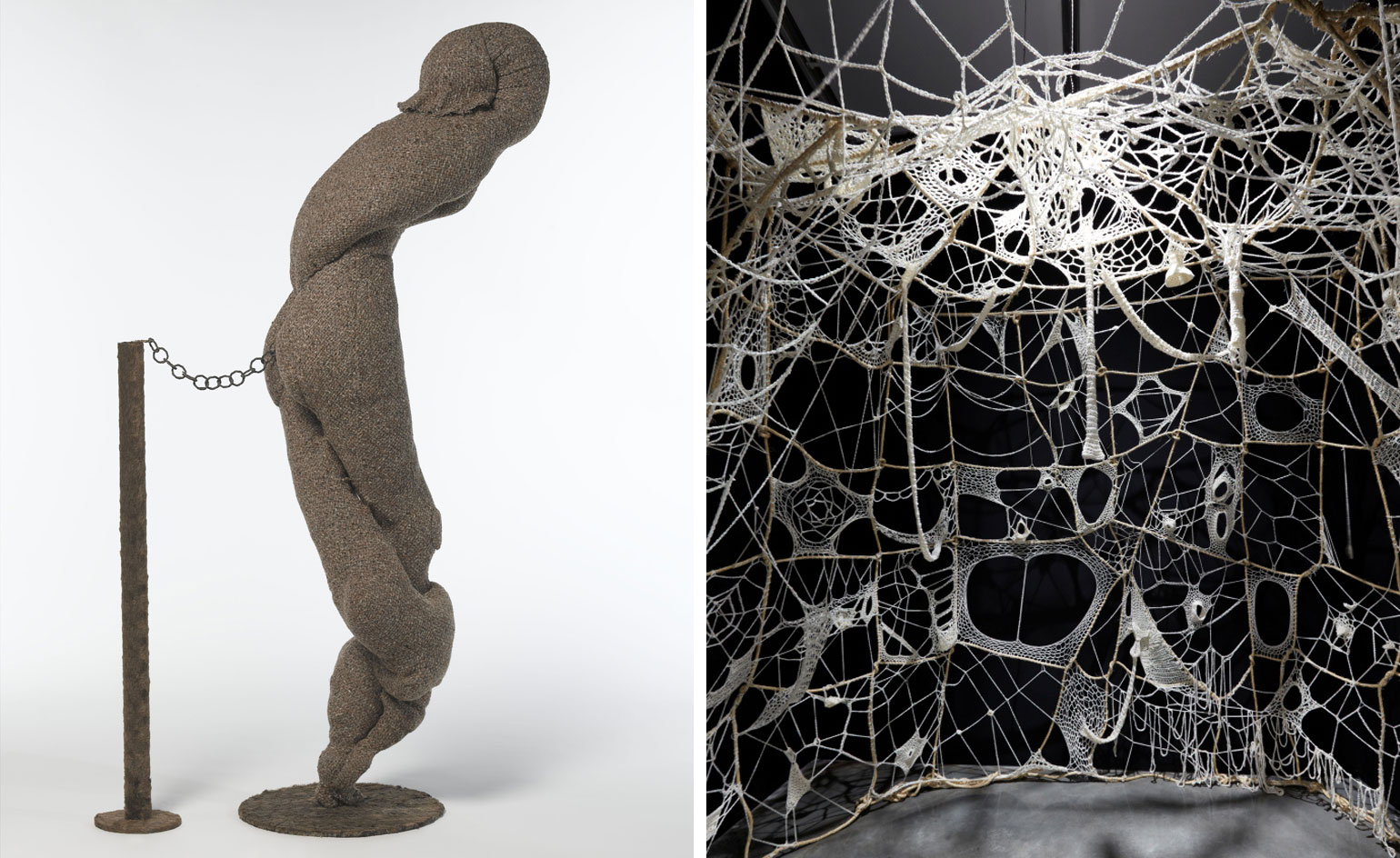
Pieces like Dorothea Tanning's De Quel Amour and Faith Wilding's web-like Crocheted Environment, represent the new wave of feminist artists who reappropriated traditional domestic crafts to create subversive artworks in the 1970s. Pictured left: De Quel Amour, by Dorothea Tanning, 1970. Courtesy Centre Pompidou and Musee National d'Art Moderne. Right: Crocheted Environment, by Faith Wilding, 1972/1995.
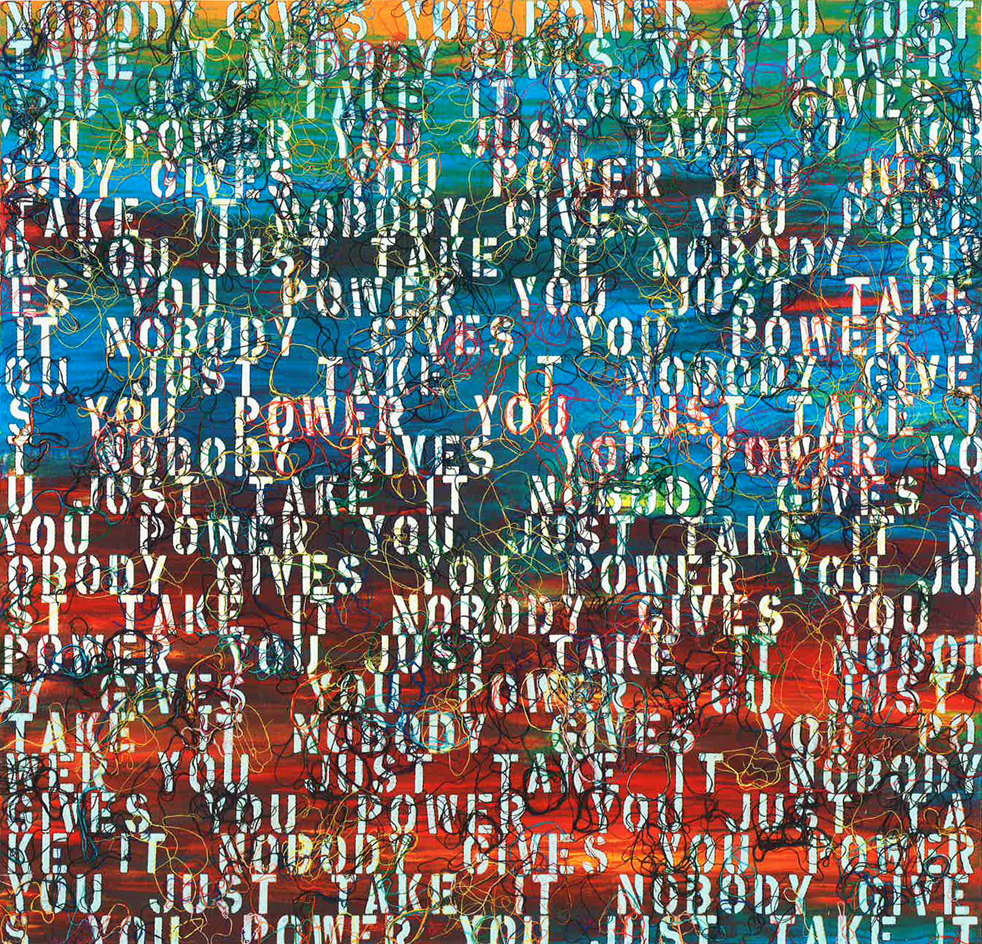
Artists like Wilding and Tanning paved the way for contemporary names such as Ghada Amer, who's embroidered Sunset with Words – RFGA is emblazoned with the words “Nobody gives you power you just take it”, across a rainbow background. Pictured: Sunset With Words – RFGA, by Ghada Amer, 2013
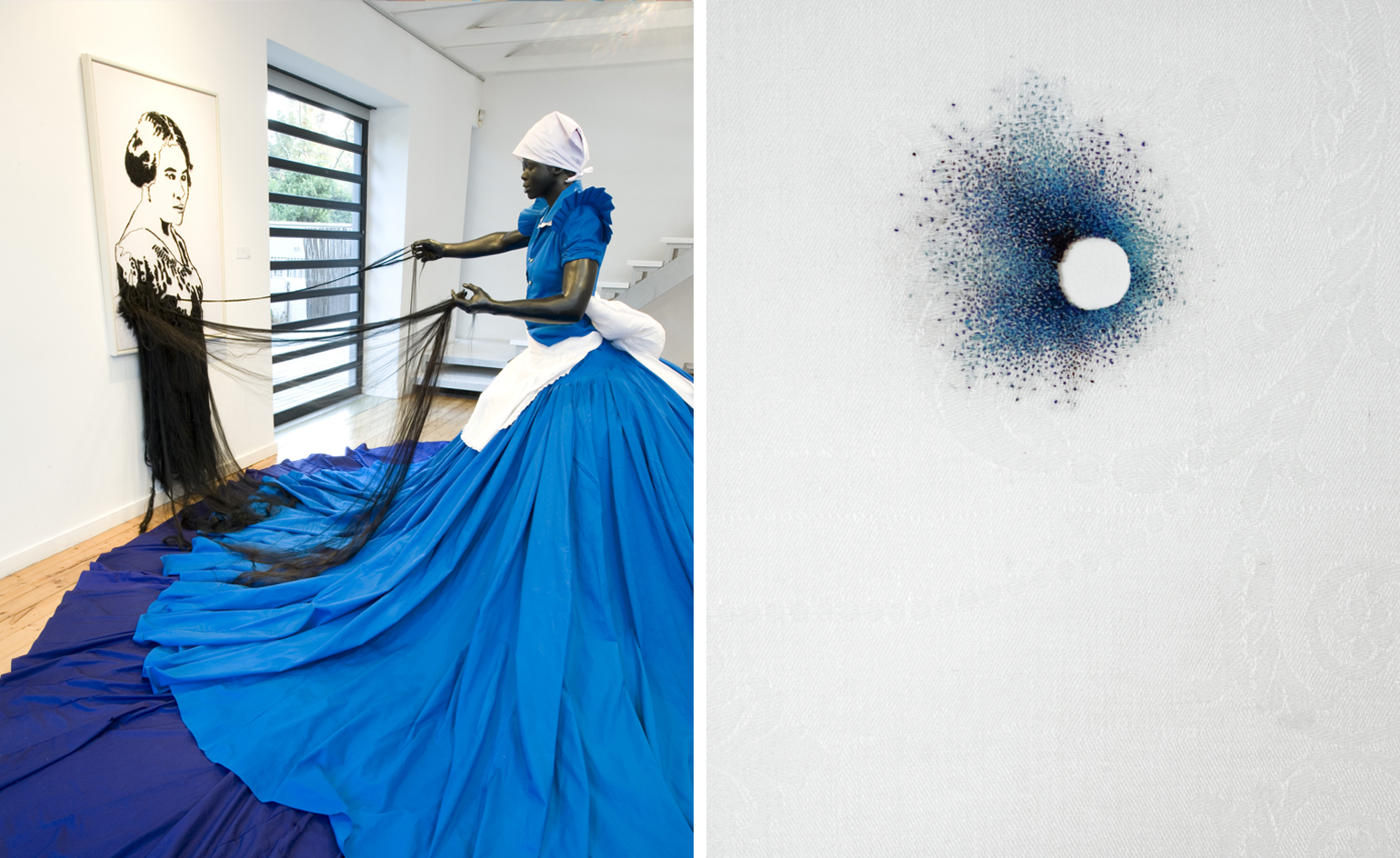
Key themes include issues of feminism and politics of identity and nationhood, as well as the value of the handmade in the digital age. Pictured left: Sophie Velucia and Madame CJ Walker, by Mary Sibande, 2009. Courtesy of the artist and Gallery Momo, Johannesburg. Right: Dispersions (no. 27) (detail), by Anne Wilson, 2014.
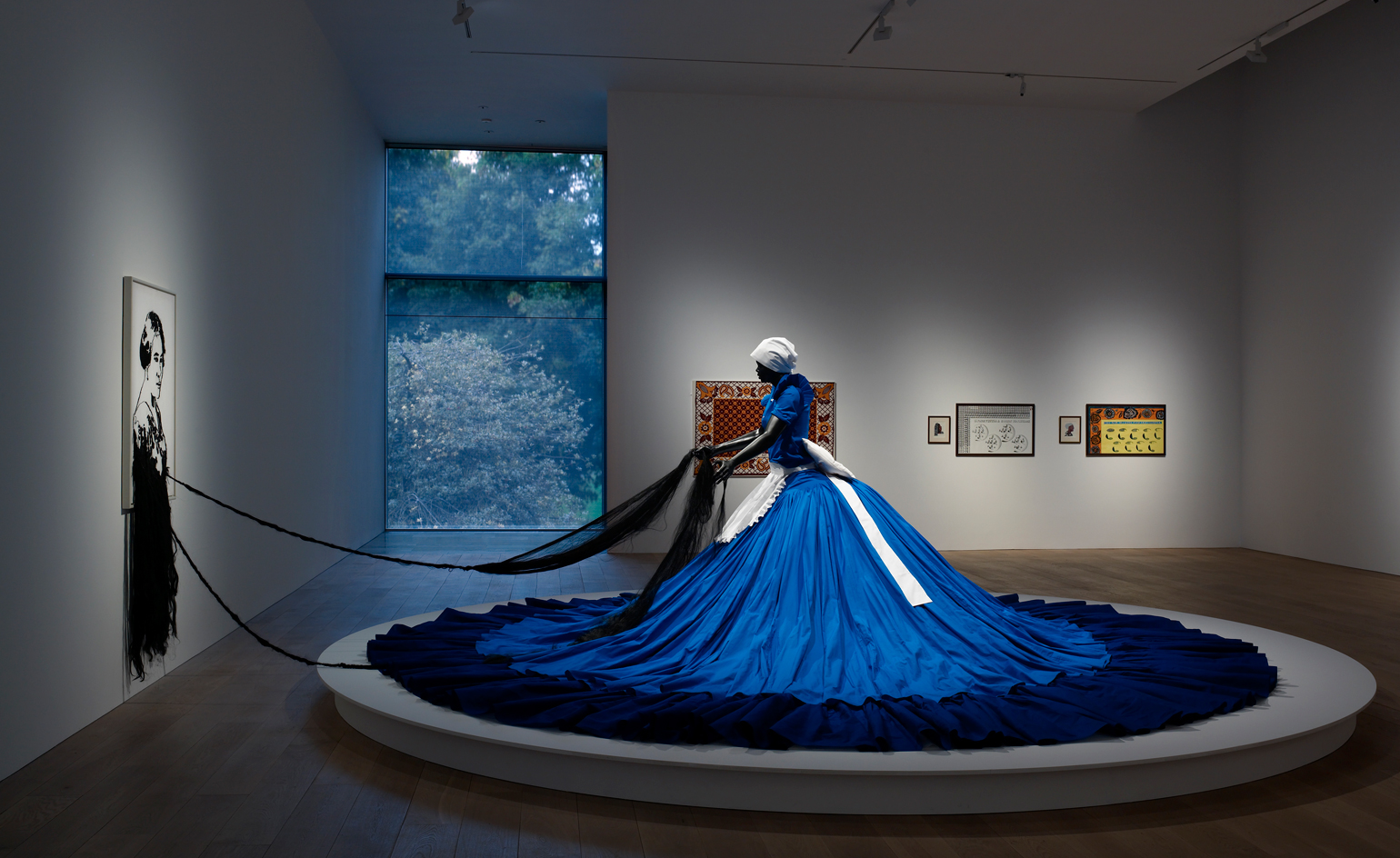
The creation of textiles made to express social, political or artistic ideas is a practice that, as the curators note, has been growing since the 1960s
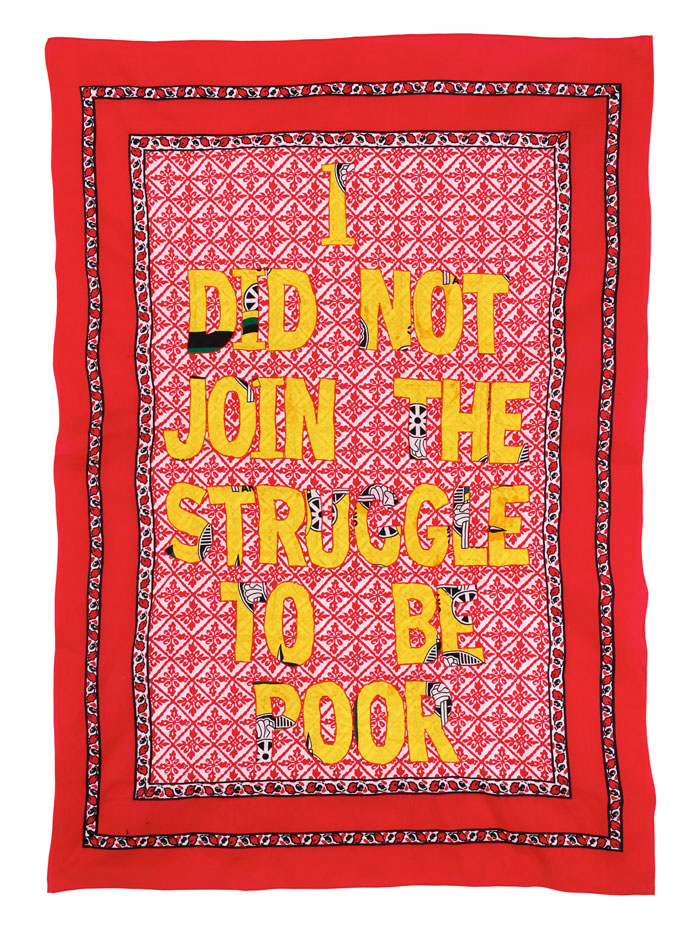
Lawrence Lemaoana’s fabric and embroidery work is a sign made of the African National Congress flag that reinterprets the much-quoted statement made by former head of communications for the ANC. Pictured: I Did Not Join The Struggle To Be Poor, by Lawrence Lemaoana, 2015.
INFORMATION
’Art_Textiles’ is on view until 31 January
ADDRESS
The Whitworth
The University of Manchester
Oxford Road
Manchester, M15 6ER
Wallpaper* Newsletter
Receive our daily digest of inspiration, escapism and design stories from around the world direct to your inbox.
Ali Morris is a UK-based editor, writer and creative consultant specialising in design, interiors and architecture. In her 16 years as a design writer, Ali has travelled the world, crafting articles about creative projects, products, places and people for titles such as Dezeen, Wallpaper* and Kinfolk.
-
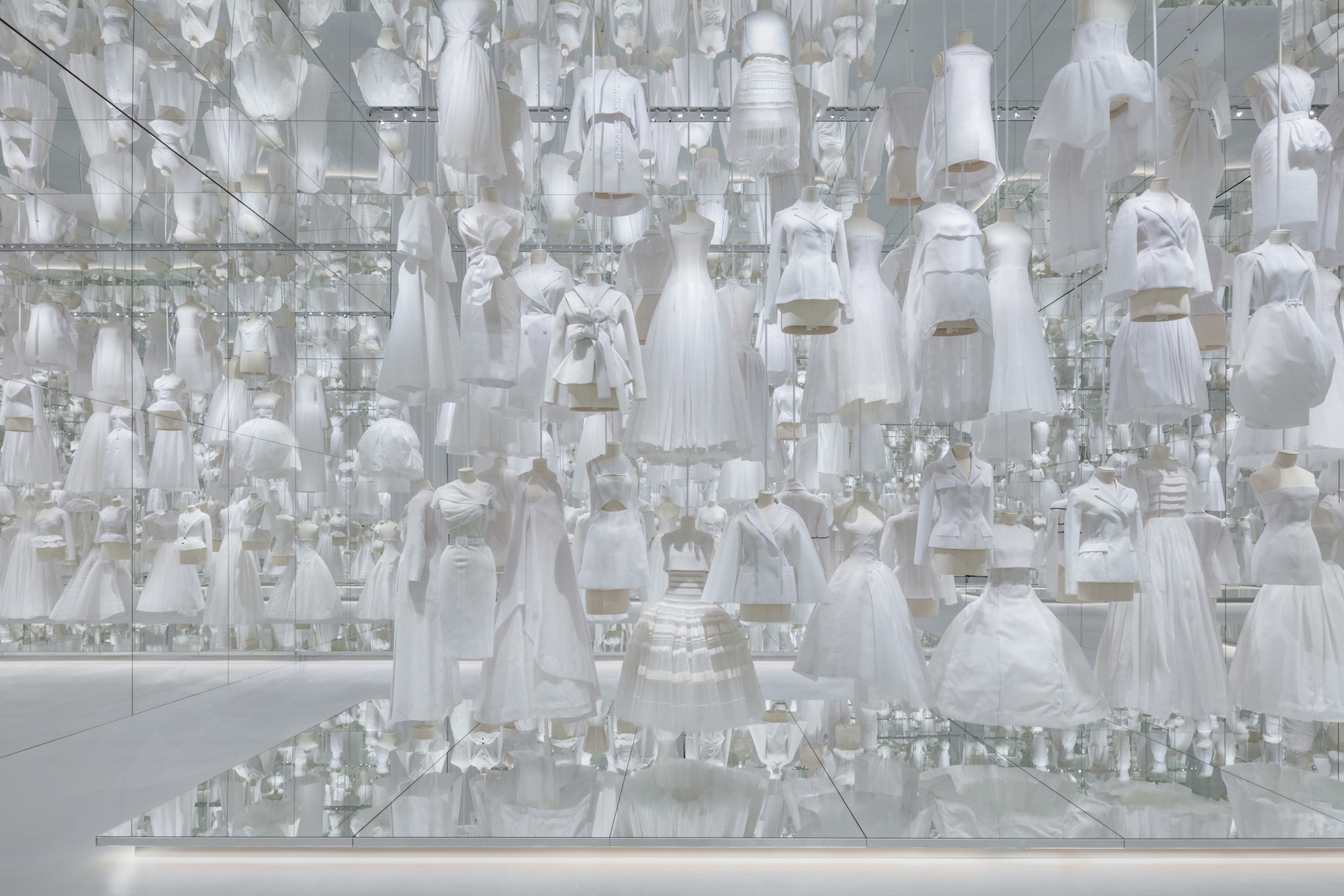 With scenography by OMA, Dior’s ‘Designer of Dreams’ exhibition in Seoul is ‘a piece of theatre’
With scenography by OMA, Dior’s ‘Designer of Dreams’ exhibition in Seoul is ‘a piece of theatre’OMA partner Shohei Shigematsu catches up with Wallpaper* about the dramatic show design for the latest iteration of ‘Christian Dior: Designer of Dreams’, which opened in Seoul this weekend
By Daven Wu
-
 Mercedes-Benz previews its next-gen people mover with an ultra-luxury EV concept
Mercedes-Benz previews its next-gen people mover with an ultra-luxury EV conceptThe Mercedes-Benz Vision V Concept is an art deco picture palace on wheels, designed to immerse passengers in parallel worlds as they travel
By Jonathan Bell
-
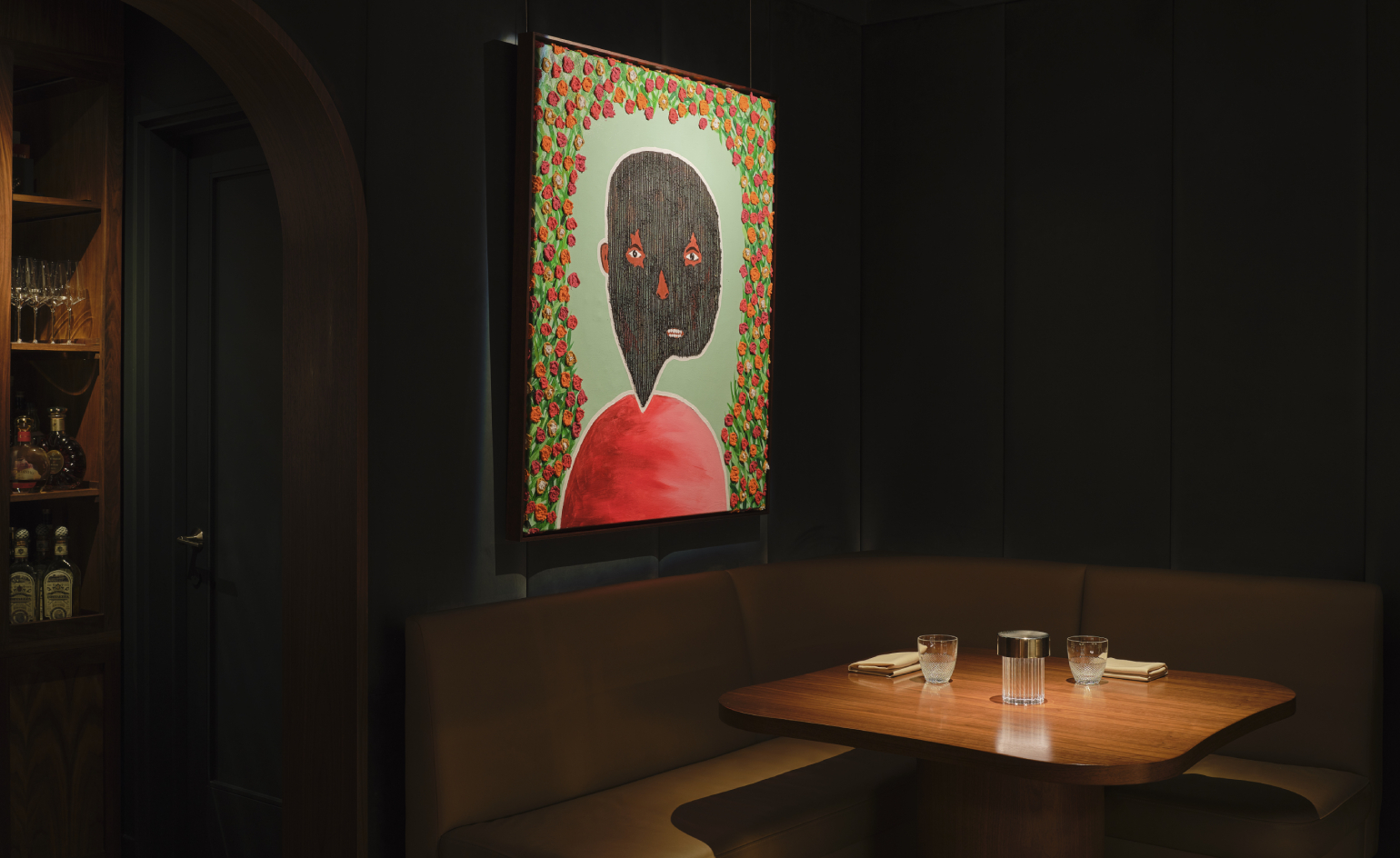 Visit this Michelin-star New York restaurant that doubles as an art gallery
Visit this Michelin-star New York restaurant that doubles as an art galleryArtist Mr.StarCity is exhibiting his emotionally charged yet optimistic ‘Bloomers’ portrait series at Frevo, a Greenwich Village hidden haunt
By Adrian Madlener
-
 The art of the textile label: how British mill-made cloth sold itself to Indian buyers
The art of the textile label: how British mill-made cloth sold itself to Indian buyersAn exhibition of Indo-British textile labels at the Museum of Art & Photography (MAP) in Bengaluru is a journey through colonial desire and the design of mass persuasion
By Aastha D
-
 Artist Qualeasha Wood explores the digital glitch to weave stories of the Black female experience
Artist Qualeasha Wood explores the digital glitch to weave stories of the Black female experienceIn ‘Malware’, her new London exhibition at Pippy Houldsworth Gallery, the American artist’s tapestries, tuftings and videos delve into the world of internet malfunction
By Hannah Silver
-
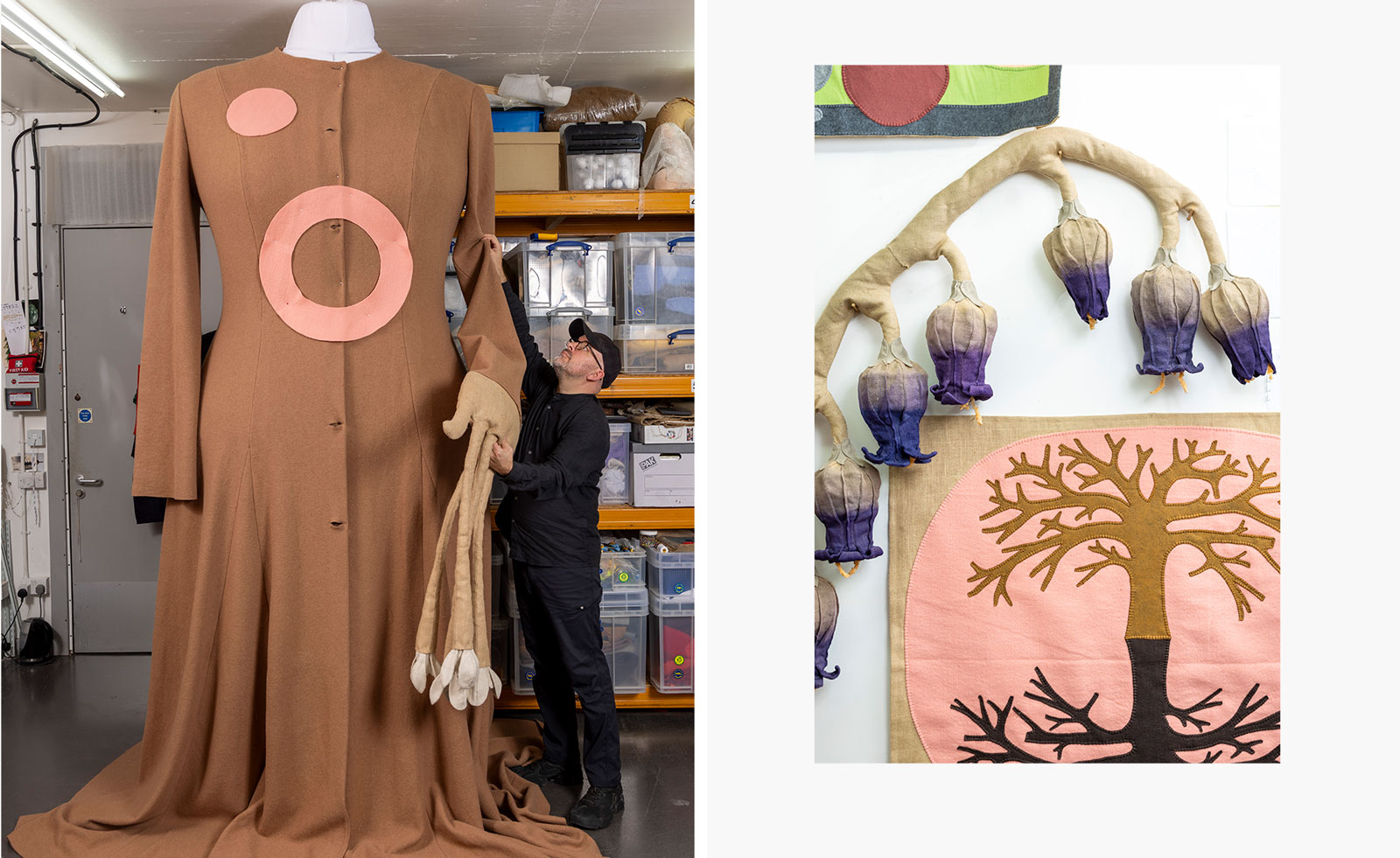 'We need to be constantly reminded of our similarities' – Jonathan Baldock challenges the patriarchal roots of a former Roman temple in London
'We need to be constantly reminded of our similarities' – Jonathan Baldock challenges the patriarchal roots of a former Roman temple in LondonThrough use of ceramics and textiles, British artist Jonathan Baldock creates a magical and immersive exhibition at ‘0.1%’ at London's Mithraum Bloomberg Space
By Emily Steer
-
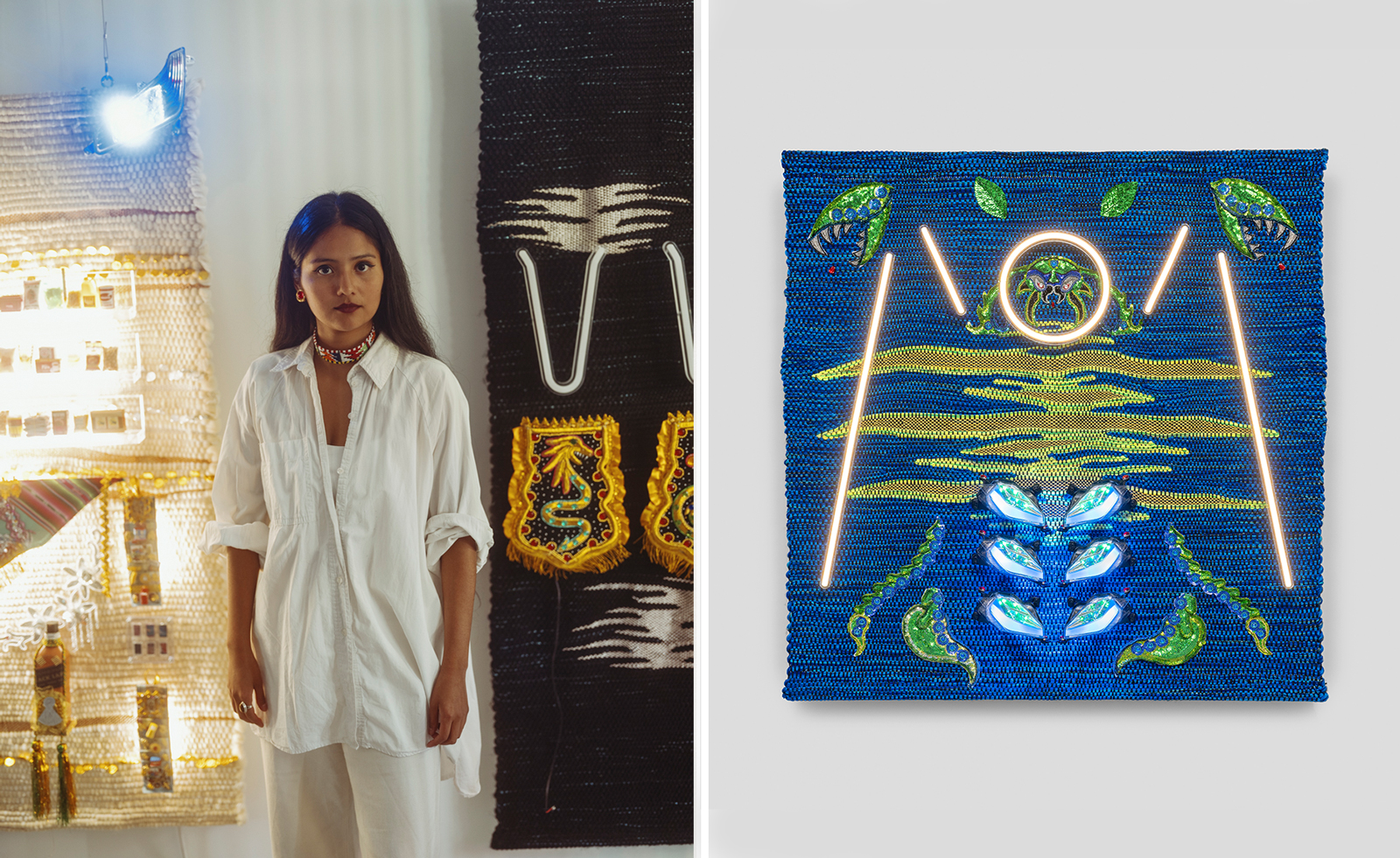 Meet Kenia Almaraz Murillo, the artist rethinking weaving
Meet Kenia Almaraz Murillo, the artist rethinking weavingKenia Almaraz Murillo draws on the new and the traditional in her exhibition 'Andean Cosmovision' at London's Waddington Custot
By Hannah Silver
-
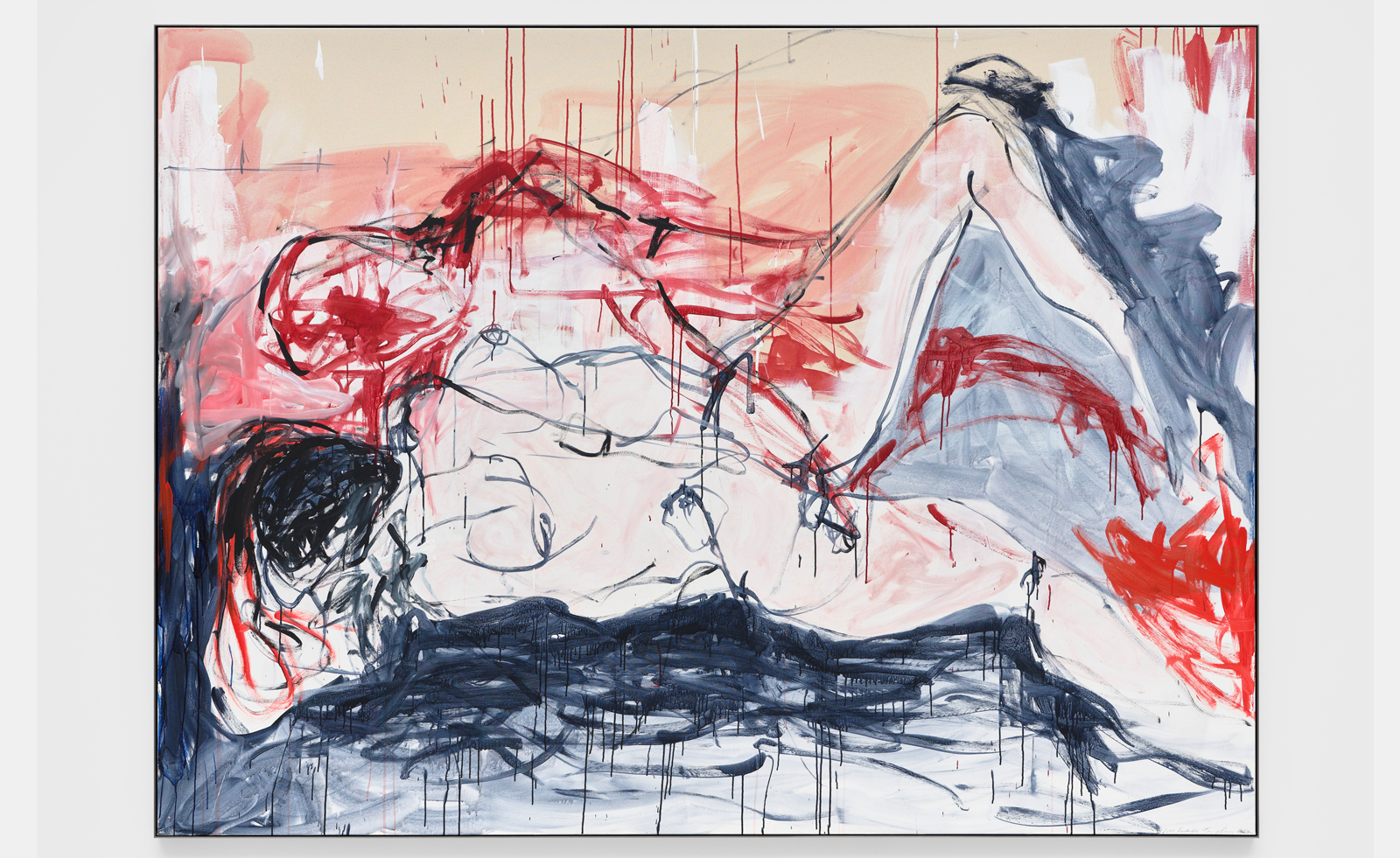 ‘This blood that is flowing is my blood, and that should be a positive thing’: Tracey Emin at White Cube
‘This blood that is flowing is my blood, and that should be a positive thing’: Tracey Emin at White CubeTracey Emin’s exhibition ‘I followed you to the end’ has opened at White Cube Bermondsey in London, and traces the artist’s journey through loss
By Hannah Silver
-
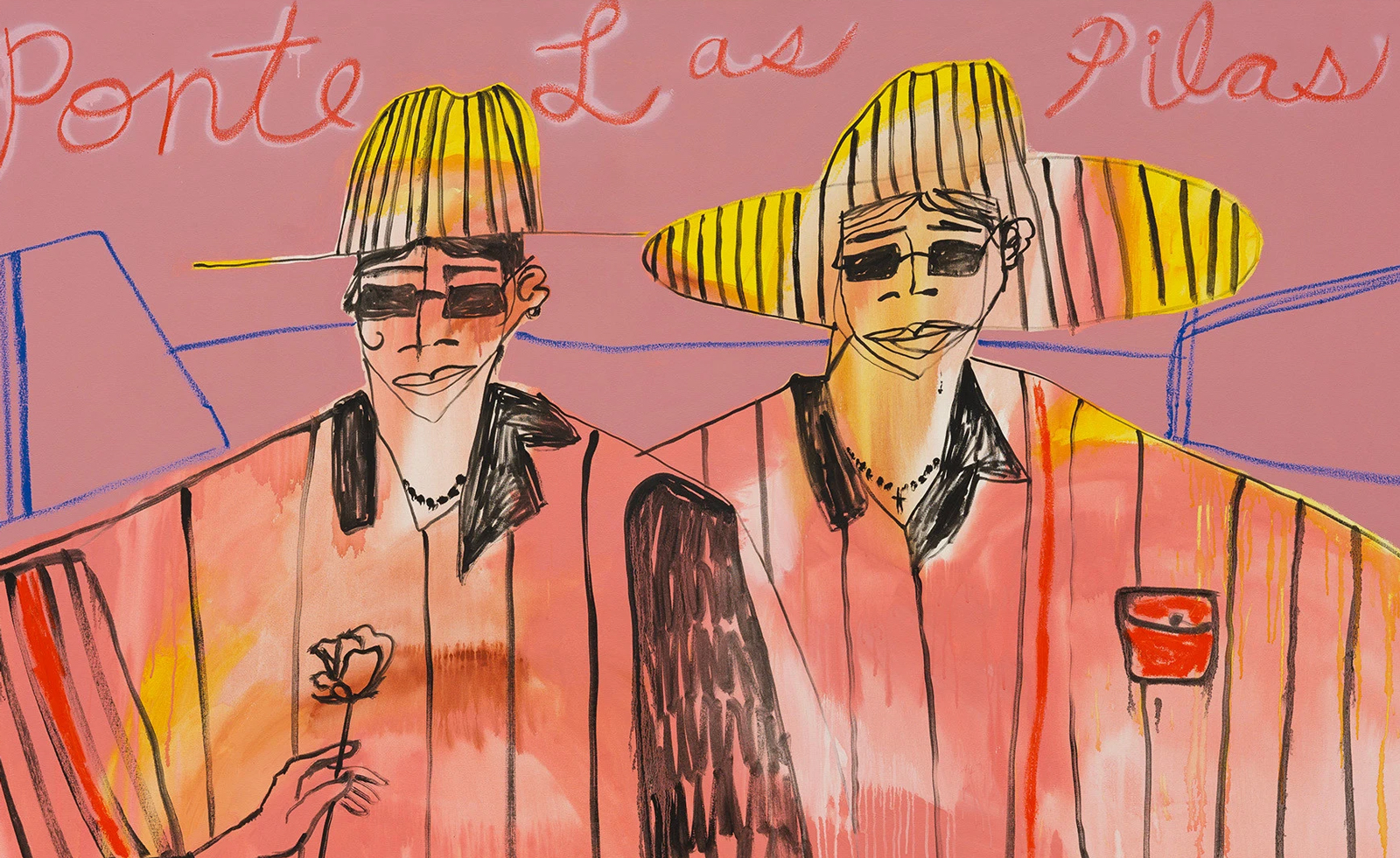 Studio Lenca nods to Salvadorian heritage with riot of colour in Margate
Studio Lenca nods to Salvadorian heritage with riot of colour in MargateStudio Lenca considers boundaries in ‘Leave to Remain’ at Carl Freedman Gallery in Margate
By Emily Steer
-
 Politics, protest and potential: the Barbican explores the power of textiles in art
Politics, protest and potential: the Barbican explores the power of textiles in artUnravel: The Power and Politics of Textiles in Art’ at the Barbican Centre in London explores how far the medium has evolved in the last sixty years
By Emily Steer
-
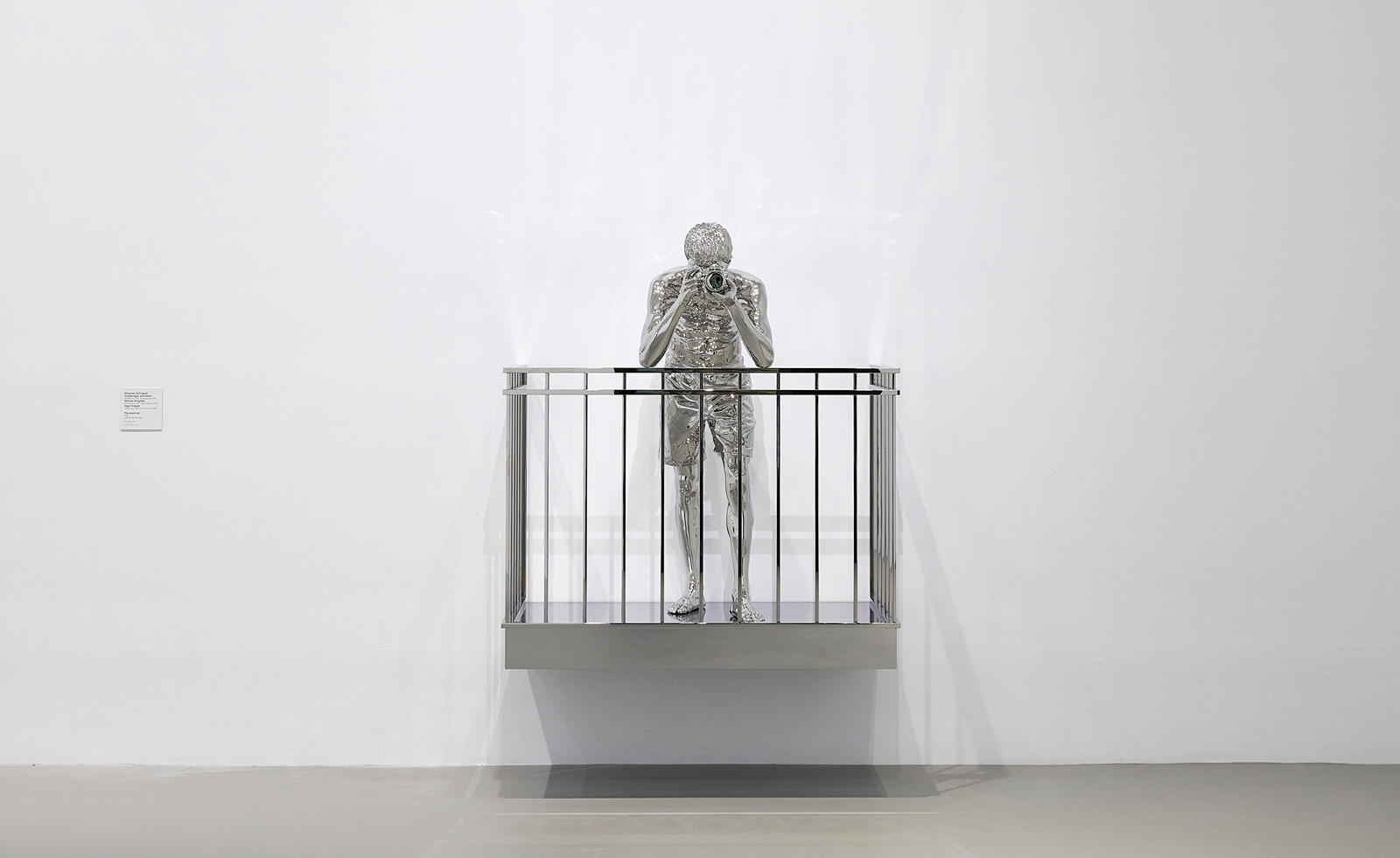 At Melbourne’s NGV Triennial 2023, artists consider magic, matter and memory
At Melbourne’s NGV Triennial 2023, artists consider magic, matter and memoryMelbourne’s NGV has opened its third triennial, uniting art, design and architecture from around the world
By Elias Redstone